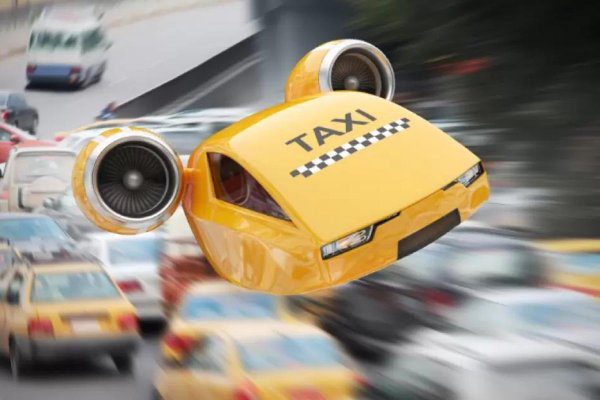One of the main elements that make up the retrofuturist trend, in cities where the ground basically doesn’t exist anymore, and people live in capsule houses in immense buildings in the best style The Fifth Element
–, are the flying cars.
The obsession with them is directly associated with a utopian vision of the world – exactly the proposal of retrofuturism –, enhanced by the countless works of science fiction produced over the years, which extol a future in which, it is hoped, poverty, hunger and disease will be past subjects.
Moreover, traffic and commuting became one of the main reasons the industry became obsessed with the idea of sending cars to the sky. Currently, according to a study developed by TomTom, the worst traffic in the world is in Moscow, Russia, accumulating a congestion charge of 54%.
A reality for few
(Source: Pinterest/Reproduction)
As indicated by the Hedges Company, there are 1.446 billion cars in the world in 2022, with the countries tied for the highest number of vehicles per capita being the United States and New Zealand, where both have around of 0.9 cars for each person.
The idea remains that flying cars will bring more quality of life, avoiding endless traffic that ruins a person’s day, leading to greater negative effects on your emotional health. Five researchers from the University of Sharjah published in the journal IOMC World a study on the impact that traffic and long hours behind the wheel have on people. He showed that nervousness increases by 74.2%; aggressiveness in 52.2%; headaches in 43.3%; dizziness in 28.8%; and stress in 80.4% of the cases.
In theory, taking cars to the skies would greatly reduce these factors, but even so, it would be a reality for few, since flying remains a privilege. In the 1960s, when commercial flying began to become popular, wealthy Americans who lived in the air, traveling the world, were called “jet setters”, as they stamped photos in magazines and appeared in reports showing how good this life was.
(Source: Amazon/Reproduction)
Anyway, nothing has ever stopped man from dreaming about the future of flying cars, so much so that, in the US alone, there are almost 80 patents registered at the Patent and Trademark Office for various types of flying cars.
Starting with Glenn Curtiss, in 1917, in the chaos of the First World War, considered the “father” of the flying car when he presented the first vehicle of this type with his Autoplane. Made of aluminum and with three wings of 12.2 meters each, the car’s engine drove a four-blade rear propeller, but that wasn’t enough to make the car really take off, just make a few short jumps.
The problem with cars
(Source: Pinterest/Reproduction)
Currently, there are some prototypes of flying cars, such as the LaBiche Aerospace FSC-1. It was built with the intention that its owners drive it like a high-performance sports car, reaching speeds of up to 280 km/h, and that it transforms into a flying car by opening its wings and V-shaped tail, transforming -o in an aircraft that reaches up to 450 km/h and about 5 thousand meters of height.
The rapid advances in the aerial car sector and its impressive numbers brought many questions from the agencies regulators and governments, as if the idea of having flying cars is safe. Companies have been working hard for years to solve the enterprise’s problems, such as failures that can happen during a flight and how to prevent a car crash from causing death and destruction. The Chinese company Ehang has already proposed to equip its air car service in Dubai with a parachute.
Furthermore, the automation of the flight is the focus of the developers, aiming to avoid common human errors, The same happens in civil aviation, with an immense amount of system redundancy to make travel increasingly safer. This is also why cars will be less complex than commercial aircraft, so even vehicle maintenance will be more practical and easier.
Facing the scenario in this way, it becomes clearer that the use of flying cars is a difficult and slow process, especially in terms of infrastructure and measures that will need to be taken when they start to take to the skies frequently; several regulations are being developed, mainly with regard to air traffic control.
According to Hugh Martin, from Lacuna Technologies, which helps cities create transport policies, it is possible to that by 2024 flying cars will be commercially available. However, there is a difference between being safe to fly and when it might actually happen.









